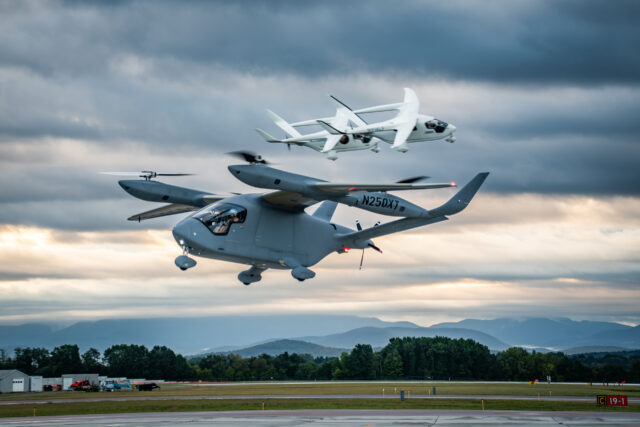GE Aerospace announces CRADA and continued work on NASA HyTEC project
July 23, 2024

GE Aerospace has shared continued progress on the CFM Revolutionary Innovation for Sustainable Engines (RISE) program, a partnership with Safran Aircraft Engines that was unveiled in 2021. Successful advances include a new Cooperative Research & Development Agreement (CRADA) with the US Department of Energy’s Oak Ridge National Laboratory on supercomputing and an ongoing collaboration with NASA’s Hybrid Thermally Efficient Core (HyTEC) project to develop hybrid electric systems.
RISE, unveiled in 2021, aims to develop technologies that enable a future engine to achieve at least 20% lower fuel consumption and 20% fewer carbon dioxide emissions compared to today’s most efficient commercial engines. “We’re building a full suite of technologies so that when decisions are made about the next generation of engine, we have advanced solutions and understand the boundaries of what can and can’t be done—to answer sustainability challenges in a measured and effective way,” explained Mohamed Ali, senior vice president of engineering for GE Aerospace.
The CRADA, announced yesterday at the opening of the Farnborough International Airshow, expands GE Aerospace’s abilities to develop computational modeling and simulation for RISE technologies like Open Fan. The engine architecture removes the nacelle for greater propulsive efficiency while maintaining speed, cabin experience, and safety through rigorous testing and collaboration with regulatory agencies.
Oak Ridge’s expertise will help manage large simulations, more efficiently extract information, incorporate cutting-edge Artificial Intelligence (AI) tools for results comprehension, and streamline the process to visualize physics. “Our expanded research collaboration through a new cooperative agreement with Oak Ridge National Laboratory will accelerate our engine design and testing, building confidence that Open Fan architecture is the most promising engine technology to help the aviation industry meet its net zero ambitions,” Ali said.
Through the NASA HyTEC project, GE Aerospace is modifying a Passport engine with hybrid electric components to test supplementing power during different phases of operation. An embedded electric motor/generator will optimize engine performance by allowing the system to operate with or without energy storage, like batteries, hopefully accelerating the introduction of hybrid electric solutions prior to the maturation of storage solutions.
The initial component-level of testing has been completed, and NASA recently awarded GE Aerospace a contract for Phase 2 of the HyTEC project, which will focus on high-pressure compressor and high-pressure turbine advanced aerodynamics, as well as the combustor.
“Our collaborations with industry partners like GE Aerospace are paving the way for U.S. leadership in hybrid electric commercial transport aircraft,” said Anthony Nerone, HyTEC project manager at NASA’s Glenn Research Center. Focus will remain on maturing technologies for single-aisle aircraft as the biggest contributors to aviation carbon emissions, but, Ali explained, these solutions could see numerous applications once refined.
“We’re so far really encouraged by the results we’re getting, in terms of all parameters,” shared Ali. The next steps include further testing at the module, ground, and flight levels, and attracting new talent. “Jet engines don’t design themselves. We’re committed to the program’s goals, not just in words, but in deeds, and it’s important to draw in workers at the global scale who see that,” Ali added.
















